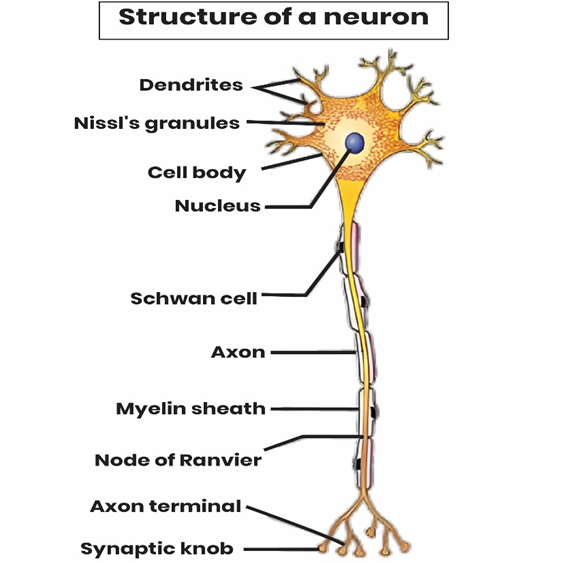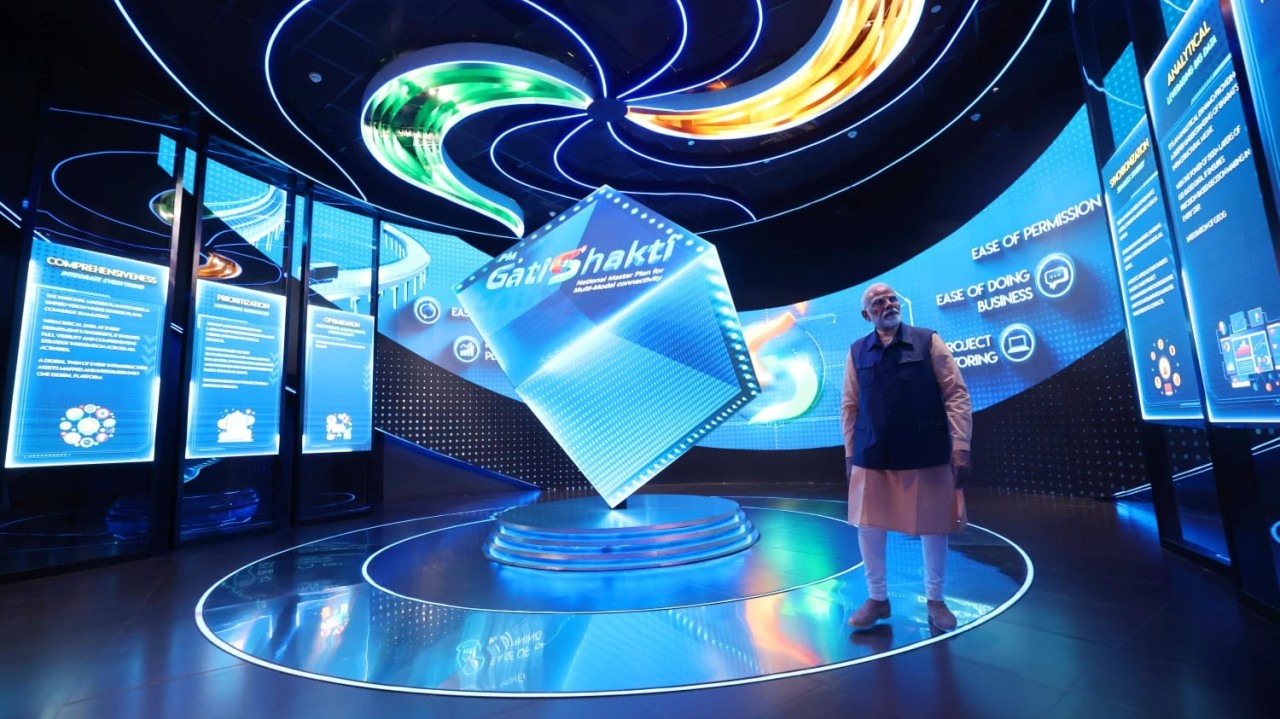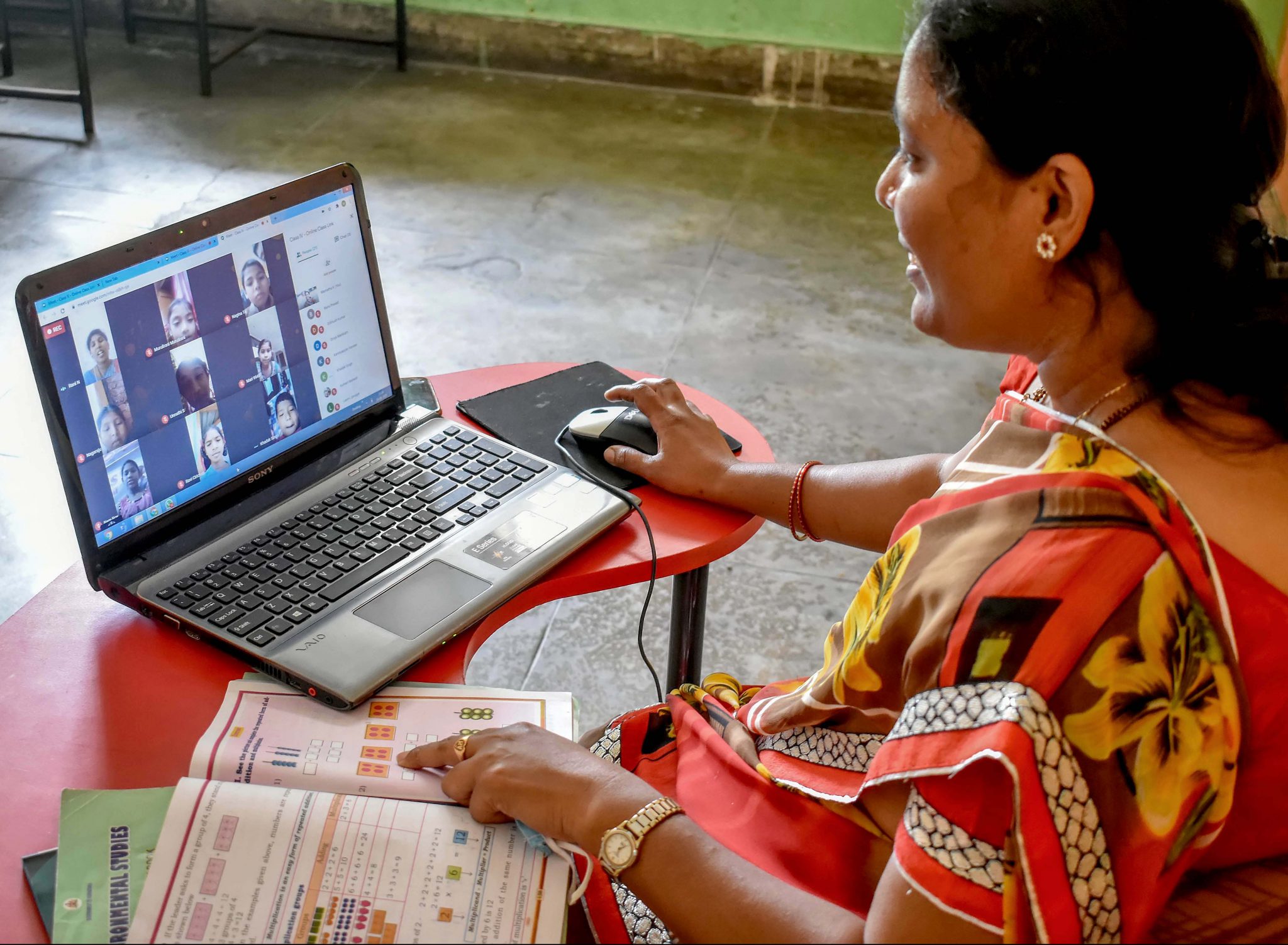- Courses
- GS Full Course 1 Year
- GS Full Course 2 Year
- GS Full Course 3 Year
- GS Full Course Till Selection
- Answer Alpha: Mains 2025 Mentorship
- MEP (Mains Enrichment Programme) Data, Facts
- Essay Target – 150+ Marks
- Online Program
- GS Recorded Course
- Polity
- Geography
- Economy
- Ancient, Medieval and Art & Culture AMAC
- Modern India, Post Independence & World History
- Environment
- Governance
- Science & Technology
- International Relations and Internal Security
- Disaster Management
- Ethics
- NCERT Current Affairs
- Indian Society and Social Issue
- NCERT- Science and Technology
- NCERT - Geography
- NCERT - Ancient History
- NCERT- World History
- NCERT Modern History
- CSAT
- 5 LAYERED ARJUNA Mentorship
- Public Administration Optional
- ABOUT US
- OUR TOPPERS
- TEST SERIES
- FREE STUDY MATERIAL
- VIDEOS
- CONTACT US
“Breakthrough Device” Status To Neuralink's Blindsight
“Breakthrough Device” Status To Neuralink's Blindsight
24-10-2024
- In September 2024 the US Food and Drug Administration (FDA) granted "breakthrough device" status to Elon Musk's Neuralink's Blindsight, a Brain-Computer Interface implant.
- This designation aims to speed up the development and review of innovative medical devices that address severe conditions.
- Neuralink (neurotechnology startup), founded by Elon Musk in 2016, focuses on developing brain chip interfaces that could help restore vision, aid in movement, and facilitate communication for patients with disabilities.
- The 'Blindsight Chip is aimed at helping blind patients (who have lost their both eyes and optic nerves) or those who have been blind from birth to regain their sight
|
Neuralink implants brain chip in 1st human.
|
What are Brain-Computer Interfaces (BCIs)?
- A BCI is a computer-based system that acquires, analyzes, and translates brain signals into commands relayed to an output device to perform a desired action. It comprises three main components:
- Device to measure brain activity, It is usually in form of a headset that has specialized sensors
- A computer to process and analyze the recorded brain activity.
- Application/device to carry out command.
- Once the computer has 'determined' what the user wants to do, it will send a signal to application/device to carry out command.
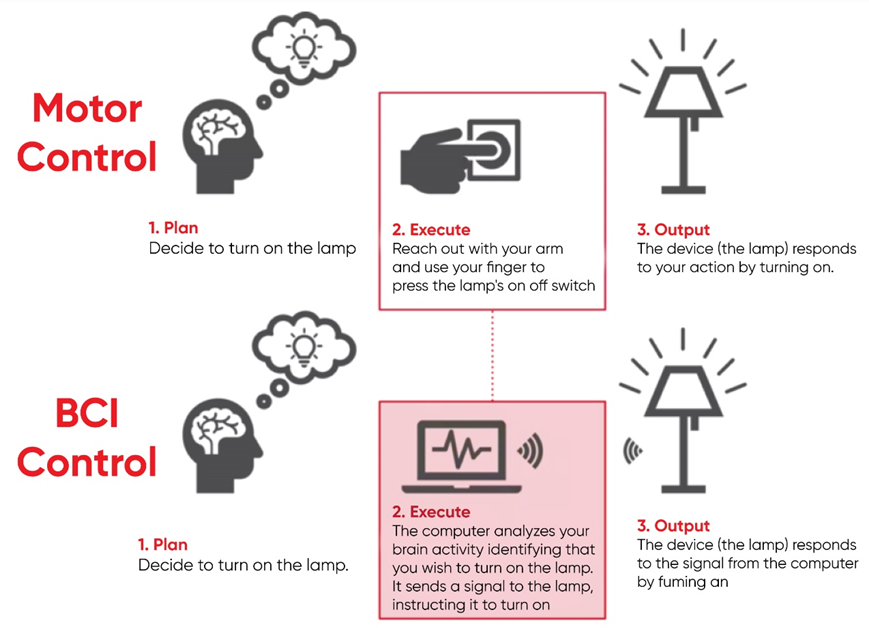
- Another important part of BCI is feedback: Providing feedback helps user adapt to BCI system
- User and BCI work together: User, often after a period of training, generates brain signals that encode intention,
- And BCI, also after training, decodes the signals and translates them into commands to an output device that accomplishes the user's intention.
- Thus, BCIs do not use the brain's normal output pathways of peripheral nerves and muscles.
- This definition strictly limits the term BCI to systems that measure and use signals produced by the central nervous system (CNS).
- BCI do not read minds in the sense of extracting information from unsuspecting or unwilling users but enable users to act on the world by using brain signals rather than muscles.
Types of BCIs
- Invasive BCI (Brain Implants): Implanted directly into the brain's grey matter during neurosurgery, these offer stronger brain activity signals. Example: Neuralink's Blindsight implant.
- Non-invasive BCI (Surface Detectors): Set of electrodes, known as an electroencephalograph (EEG) attached to scalp. Electrodes can read brain signals.
- E.g., Electroencephalography (EEG), Functional Magnetic Resonance Imaging (fMRI) etc
- Partially Invasive BCIs (Dura Mater Implant): Partially invasive BCI devices are implanted inside the skull but rest outside the brain rather than within the grey matter. They produce better resolution signals than non-invasive BCIs.
- E.g., Electrocorticography (ECoG), It records brain activity by placing electrodes in direct contact with cerebral cortex or surface of the brain.
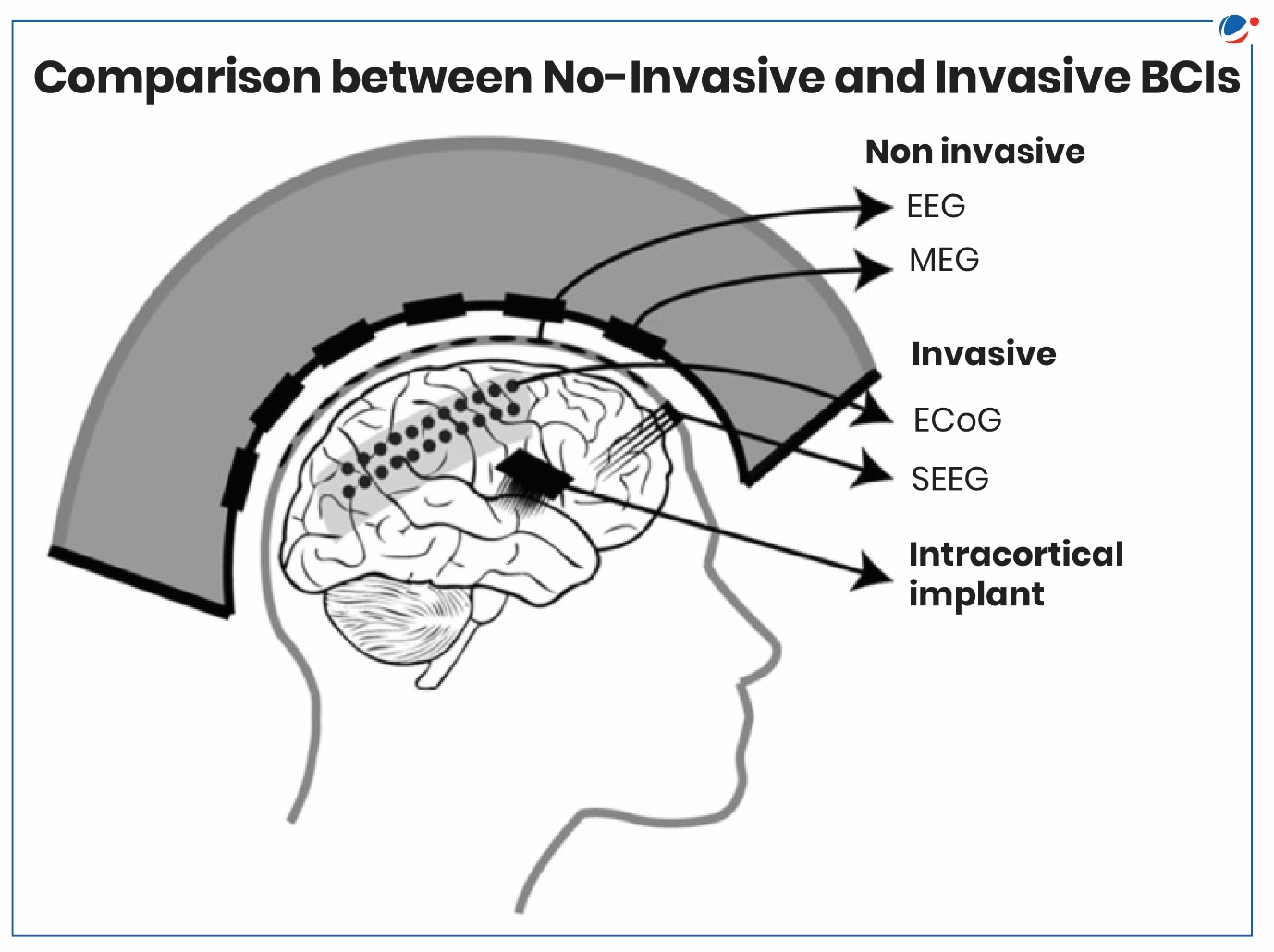
Key Application Areas of BCIs
BCIs are emerging as a transformative technology with the potential to revolutionize various fields.
- Medical: BCIs hold immense promise in the medical field, aiding in the prevention, diagnosis, and rehabilitation of patients with disabilities or neurological disorders.
- They can help restore lost motor functions, enable communication for those with speech impairments, and provide new treatments for conditions like paralysis and epilepsy.
- Mental Wellness: BCIs can track real-time brain activity, providing valuable insights into mental states and cognitive processes.
- This information can be used to enhance mental health practices, such as meditation and mindfulness training, and potentially aid in the diagnosis and treatment of mental health conditions.
- Cognitive Enhancement: BCIs offer the potential for cognitive enhancement by enhancing memory, attention, and decision-making abilities.
- This could have significant implications for education, professional training, and personal development.
- Gaming & Entertainment: BCIs can enable immersive gaming experiences by allowing users to control game elements with their thoughts.
- This technology has immense potential for developing virtual and augmented reality applications, creating more interactive and engaging entertainment experiences.
Challenges in Brain Computer Interfaces:
- Technical Challenges: Difficulty interpreting complex neural patterns, weak signals, environmental interference.
- Invasive BCI can damage nerve cells and blood vessels, hence increasing risk of infection.
- Brain Tapping: Intercepting brain signals can compromise privacy, revealing emotions, preferences, and beliefs.
- Misleading Stimuli Attacks: Manipulating signals or feedback could lead to brain hijacking, potentially influencing behavior.
- Legal Barriers: Currently, no comprehensive legal framework governs the use of BCIs, particularly in terms of safety, efficacy, and data protection.
- Ethical concerns:
- Question of Informed consent, potential for stigma and discrimination, research ethics, compromised autonomy etc.
- Direct interaction between brains and machines brings may result in of cyborgization.
- Cyborgs can have a variety of enhanced abilities, including: Greater strength, improved senses, Computer-assisted brains, and Built-in weaponry.
Way- forward
- Transparency & Consent: Adhering to privacy regulations and ensuring informed consent.
- Regulatory Oversight: Establishing legal frameworks to prevent harmful BCI practices.
- Enhanced Security: Researching advanced security measures, including cryptographic protection.
- Public Awareness: Educating the public about BCI risks and safety measures.
|
Key Concepts
|
Must Check: Best IAS Coaching In Delhi
UPSC Prelims Result 2024 Out: Expected Cut Off & Other Details, UPSC Prelims 2024 Answer with Explanation, Daily Prelims Quiz, Daily Current Affairs, MONTHLY CURRENT AFFAIRS TOTAL (CAT) MAGAZINE, Best IAS Coaching Institute in Karol Bagh, Best IAS Coaching Institute in Delhi, Daily Mains Question Answer Practice, ENSURE IAS UPSC Toppers, UPSC Toppers Marksheet, Previous Year Interview Questions, UPSC Syllabus

